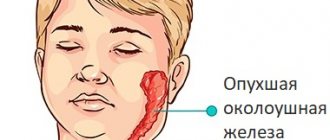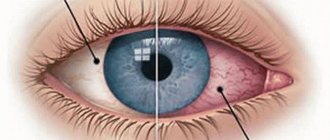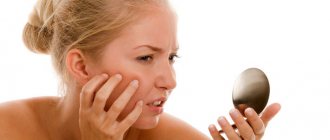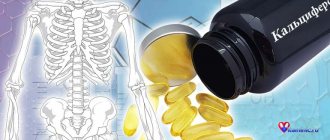Meningitis is an extremely serious and serious disease. Inflammation is localized mainly in the membranes of the child’s brain. Both children and adults are susceptible to this disease. The causative agents of the disease are considered to be viruses and bacteria; most often children aged 3 to 6 years suffer from this serious illness. Symptoms of serous meningitis in children should not be ignored, and at the first suspicion, parents should take the child to the doctor.
What is the disease?
Today, many are interested in what serous meningitis is, the symptoms and causes of its occurrence, etc. This is a group of diseases of infectious origin. And such diseases are accompanied by inflammation of the soft membranes of the spinal cord and brain.
A distinctive feature is the rapid development of the inflammatory process of the serous type. At the same time, the main meningeal symptoms are not so pronounced, and the inflammation is benign. However, even a mild form of this disease requires appropriate treatment, since the lack of therapy is fraught with dangerous consequences.
Treatment of serous meningitis
Treatment of serous meningitis is divided into etiotropic (aimed at eliminating the pathogen) and symptomatic. Therapeutic measures directed directly against the pathogenic agent can be taken only after determining its nature - that is, obtaining the results of serological tests. For viral inflammation of the meninges, antiviral drugs are prescribed. Treatment of tuberculous, syphilitic or fungal forms of serous meningitis is carried out with antibiotics and antifungal agents.
Symptomatic therapy often comes down to the prescription of anti-inflammatory drugs from the group of steroids - they reduce the severity of the process and reduce the likelihood of developing negative consequences of serous meningitis. In addition, vitamin therapy and a special diet may be indicated. If one of the causes of the disease is a decrease in immunity, immunostimulating drugs are prescribed as an adjuvant.
During the recovery period, nootropic drugs are used that improve the processes of microcirculation and metabolism in the nervous system.
The main reasons for the development of serous meningitis
Serous meningitis is an infectious disease. In most cases, the cause of its appearance is a viral infection, in particular, representatives of the enterovirus group. Moreover, in modern medicine it is customary to distinguish two groups of this pathology:
- Primary serous meningitis develops as an independent disease. The causative agents in this case are the ECHO virus, the Coxsackie virus and some others.
- The secondary form of the disease usually occurs against the background of another infectious disease. For example, serous meningitis in children can appear with measles, chickenpox, influenza, mumps and some other viral diseases. Much less often, bacterial and fungal microorganisms are the culprits of inflammation.
Of course, the method of transmission of infection is also an important issue. And, unfortunately, you can catch the virus in different ways:
- Viral particles can be transmitted through the air, since the pathogen is often localized in the mucous membrane of the upper respiratory tract. The infection is expelled when coughing or sneezing along with saliva and can easily enter the respiratory system of a healthy person, especially if we are talking about close contact.
- A household route of transmission is also possible, in which viral particles fall on various household items, toys, towels, etc. In addition, the infection can be contracted by eating unwashed vegetables or fruits.
- Enteroviral serous meningitis can be transmitted through water. For example, in the summer, outbreaks of this disease are often recorded among children and adults swimming in closed reservoirs.
Of course, the main source of infection is a sick person. On the other hand, you can also become infected from carriers whose body is infected, but they do not show the main symptoms.
Forms of serous meningitis
The classification of the disease is based on the etiology and type of pathogen. There are several main types of serous meningitis, which, in addition to the causes of the pathology, have a number of clinical features:
- Viral forms. They are the most common types of serous meningitis. The most common pathogens are the Epstein-Barr virus, enteroviruses, paramyxoviruses, Coxsackievirus, and less commonly, influenza, measles, and polio viruses.
- Bacterial forms. In most cases, purulent inflammation with a more severe course is observed. The exceptions are Mycobacterium tuberculosis and the causative agents of syphilis (spirochetes or Treponema pallidum). Isolated forms of serous meningitis caused by these infectious agents are extremely rare. Typically, inflammation of the meninges is part of a complex symptom complex with damage to other organs and systems (miliary tuberculosis, neurosyphilis).
- Fungal forms. They are extremely rare in people with severely reduced activity of the immune system (with AIDS, radiation sickness, after chemotherapy). The causative agents are fungi from the genus Candida or (less commonly) Cryptococcus.
- Other forms. This group includes varieties of disease caused by protozoal invasion (toxoplasmosis), systemic and autoimmune pathologies, tumors of the nervous system and skull bones. Serous meningitis in adults most often belongs to this group.
Who is at risk?
Of course, there are some risk groups. Since the disease develops against the background of infection, the state of the human immune system is important in this case. That is why serous meningitis is most often diagnosed in preschool children, since the protective systems of their body are in the process of formation.
In adults, such inflammation is usually associated with a severe weakening of the immune system. Risk factors include the presence of various chronic diseases that gradually deplete the body. Serous meningitis is often diagnosed in patients with cancer and various immunodeficiencies. In addition, constant stress, poor nutrition, sudden hypothermia and vitamin deficiency also increase the likelihood of developing this disease.
Risk factors include non-compliance with sanitary requirements, as well as poor living conditions. After all, rats are carriers of some viruses. By the way, in most cases, outbreaks of this disease are recorded in spring and summer.
Complications
Viral forms of serous meningitis are often complicated by the transition of the inflammatory process to brain tissue, thereby leading to the development of meningoencephalitis. In childhood, damage to nerve centers can have serious consequences - from strabismus and paresis to mental disorders and dementia. At the same time, complications caused by a viral infection are less stable and, with the right approach to treatment, can be reversible.
In adults, viral forms of serous meningitis, with the exception of acute lymphocytic choriomeningitis, occur only against the background of immunodeficiency.
Meningoencephalitis of a tuberculous or syphilitic nature develops more slowly, but leads to severe irreversible brain damage. One of the late complications of tuberculous meningitis is the development of adhesions that impede the circulation and outflow of cerebrospinal fluid, which can cause hydrocephalus (in children) or a chronic increase in intracranial pressure (in adults).
Development mechanism
As mentioned earlier, children are most prone to this disease, since in adult patients the fully formed blood-brain barrier represents a powerful barrier to viral infection.
Viruses infect the membranes of the brain, in the cells of which the rapid formation of new viral particles begins. Gradually, the infection changes the hemodynamics of the vascular system, which leads to the removal of large amounts of water from the bloodstream into the cerebrospinal fluid. Thus, serous meningitis is accompanied by an increase in the volume of cerebrospinal fluid, which in turn compresses the brain structures, causing characteristic symptoms.
The inflammatory process is often accompanied by a gradual thickening of the membranes of the brain, which can lead to dangerous consequences.
Forecast for life
In the vast majority of cases, with correct and timely treatment, serous meningitis has a favorable outcome. Usually the temperature begins to subside already on the 3-4th day; a repeated wave of febrility is rarely observed.
On average, serous meningitis lasts about 10 days, with a maximum of 2 weeks. As a rule, it passes without leaving any consequences. In some cases, after meningitis, liquor-hypertension syndrome, frequent cephalgia, asthenia, emotional instability, memory impairment, and difficulty concentrating may persist. However, these residual effects disappear within a few weeks or months.
Tuberculous meningitis has a serious prognosis; without the use of anti-tuberculosis pharmaceuticals, it leads to death on the 23-25th day of illness.
With a late start of anti-tuberculosis treatment, the prognosis is serious - relapses and complications are possible. Meningitis: symptoms and first signs in adults Purulent meningitis: symptoms in children and adults, treatment and prognosis Epilepsy: symptoms, causes and treatment Ischemic cerebral stroke: symptoms, treatment and recovery
Serous meningitis: incubation period and first signs
The sooner the patient receives help, the faster and easier the therapy will be. So what symptoms are accompanied by serous meningitis?
The incubation period, as a rule, lasts from 2–4 to 6–10 days, depending on the age of the patient, the state of his immune system and the type of infection. The first symptom in this case is fever. Body temperature rises sharply, sometimes up to 40 degrees. Along with this, general symptoms of intoxication of the body arise - weakness, drowsiness, chills, body aches.
What other changes are accompanied by serous meningitis? Symptoms also include severe headaches that can hardly be relieved with conventional painkillers. Pain may intensify when turning the head, loud noise, moving the eyes, etc. As for the characteristic meningeal signs (for example, stiff neck muscles, confusion), they may be mild or completely absent.
Causes and routes of infection with viral meningitis
Serous viral meningitis is an infectious disease. In 75-80% of cases, viral meningitis is caused by enterovirus infection (Coxsackie and ECHO viruses). Less commonly, the cause of serous meningitis is the mumps virus, arenaviruses, Epstein-Barr virus (the causative agent of infectious mononucleosis), adenoviruses, cytomegalovirus, herpes and measles viruses. HIV infection can also lead to the development of viral meningitis.
Viral meningitis has a seasonal incidence, which depends on the type of pathogen. Most cases of serous meningitis occur in the summer. The mumps virus has a peak incidence in spring and winter. Serous meningitis can be not only viral, but also bacterial (with syphilis, tuberculosis), and sometimes fungal.
The incubation period for serous viral meningitis is 2-4 days. Depending on the type of pathogen, the following transmission routes for pathogens of serous meningitis occur:
- airborne (from coughing, sneezing);
- contact (in the case of direct contact of a child or adult with the skin of a patient or with infected objects);
- aquatic (when swimming in bodies of water contaminated with infectious agents).
The causative agents of serous viral meningitis reach the meninges by hematogenous (through blood vessels), lymphogenous (with lymph flow) or perineural (with cerebrospinal fluid) route. The peak incidence of serous meningitis occurs in the summer. Preschoolers and children of primary school age, as well as persons with immunodeficiency conditions or weakened by other serious illnesses, are most susceptible to the disease.
Expert opinion
Author:
Andrey Igorevich Volkov
Neurologist, Candidate of Medical Sciences
Meningitis has been considered the most dangerous infectious disease for many years. In 80% of cases the disease is caused by viruses. In 70–80% of cases, the development of meningitis is provoked by an enterovirus infection. Depending on the etiological factor, the seasonality of the disease is determined. Most often the disease is registered in the summer. Meningitis is fatal in 50% of cases. Despite the initiation of treatment, 10% of patients die in the first 24–48 hours. These facts indicate the high danger of the disease.
Late appeal of the population is associated with the similarity of the initial symptoms of meningitis with colds. At this stage, patients try to relieve pathological symptoms on their own. Doctors advise not to self-medicate and seek professional help. With meningitis, every hour can be decisive.
At the Yusupov Hospital, neurologists take a comprehensive approach to the diagnosis and treatment of infectious diseases. The examination is carried out by assessing the cerebrospinal fluid. The analysis is performed after a lumbar puncture. Computed tomography will assess the degree of inflammation of the brain and determine the location of the pathological focus.
Serous meningitis: symptoms and clinical picture
As the disease progresses, other symptoms appear. For example, headache attacks are often accompanied by severe nausea and vomiting, which, however, does not bring much relief to the patient. Disorders from the digestive system are also observed, in particular, lack of appetite, abdominal pain, and diarrhea.
There are other changes that accompany serous meningitis. Symptoms in children include increased irritability as well as some mild disturbances of consciousness. In newborn babies, you can see significant swelling of the fontanel, which is associated with an increase in the amount of cerebrospinal fluid.
In some cases, serous meningitis is accompanied by muscle cramps; this phenomenon is especially common in children. On the other hand, sensitivity increases significantly. For example, the patient may overreact to light, while in twilight his condition improves slightly. Some people become overly sensitive to sounds (noise can trigger an acute headache), changes in temperature conditions, etc.
Symptoms in children
At first, symptoms of serous meningitis in children do not appear; the incubation period lasts about 5 days, after which the first signs of the disease appear. The incubation period is asymptomatic, the child does not experience any ailments. You can suspect signs of the disease from 2 days after the end of this period:
- a sharp rise in the patient's body temperature. Usually the temperature can reach 40 C. After a couple of days, the temperature drops, but soon rises again. Wave-like changes in temperature are a sure sign of inflammation;
- acute headache. Attacks of pain are caused by light and loud noises. Unpleasant sensations are localized first in the temporal lobes, gradually covering the entire head. Standard painkillers do not provide relief. Patients often complain of increased discomfort during eye movements;
- cramps of the arms and legs. In particularly severe cases, paralysis of the limbs may occur:
- general lethargy of the body. Patients note severe weakness and general malaise, muscle aches, especially the neck;
- Gastrointestinal disorders - vomiting, diarrhea. A characteristic symptom is loss of appetite, refusal to eat, antispasmodic pain in the abdomen;
- colds with sore throat, runny nose and cough;
- inability to press the chin to the chest. Soreness of the neck muscles is a symptom that indicates with 100% accuracy that the child is sick;
- sensory organs are affected by loud noise, bright light and touch. Relief occurs if all external stimuli are absent from the room. The position in which the child is located is not natural. The child throws his head back and tucks his legs.
It is worth noting specific signs. These include the following features:
- kerning symptom. The leg bends at a right angle of 90 degrees, the patient is unable to straighten it.
- Brudzinski's symptom. When one leg is extended, the other one voluntarily bends. When you try to press your chin, both legs tighten. The baby's position can be seen in photos on the Internet.
If the symptoms are similar to those described above, then you should urgently call an ambulance and go to the hospital.
Basic diagnostic methods
It is worth immediately noting that correct diagnosis in this case is extremely important, since the treatment regimen for such a disease differs from therapy for other types of meningitis. First of all, the doctor must examine the patient and become familiar with the main complaints.
If meningitis is suspected, the patient should undergo a blood test, as well as cerebrospinal fluid samples. Already during a lumbar puncture, you can notice important symptoms of meningitis - cerebrospinal fluid flows out under pressure, and after its collection the patient’s condition improves significantly.
The doctor receives additional information after laboratory tests. As a rule, a decrease in protein levels is detected in the cerebrospinal fluid with a simultaneous increase in the number of white blood cells. When examining blood, you can also notice an increase in the number of white blood cells (in particular, neutrophils) and an increase in the level of globulin fraction proteins.
Diagnostics
Diagnosis is carried out in two directions - differential and etiological. For etiological differentiation, they resort to the serological method - RSC, and the neutralization reaction also plays an important role in isolating the pathogen.
As for the distinctive diagnosis, its conclusion depends on clinical data, epidemiological summary and virological conclusion. When diagnosing, pay attention to other types of disease (tuberculosis and inflammation of the meninges caused by influenza, mumps, polio, Coxsackie, ECHO, herpes). Due attention is given to confirming meningeal syndrome:
- Rigidity of the neck muscles (the person cannot touch the chin to the chest).
- Positive Kernig test (with the leg bent at 90 degrees at the hip and knee joint, a person cannot straighten it at the knee due to hypertonicity of the flexors).
- Positive result of the Brudzinski test.
Consists of three stages:
- A person cannot press his head to his chest - his legs are pulled towards his stomach.
- If you press on the area of the pubic fusion, the legs bend at the knees and hip joints.
- When checking the Kernig symptom on one leg, the second involuntarily bends at the joints simultaneously with the first.
Differential diagnosis of serous meningitis
Differential diagnosis of serous meningitis is aimed at a more detailed study of the patient’s medical history, current symptoms and serological conclusion. Despite the fact that the meningeal complex is characteristic of all types of inflammation of the meninges, in some of its forms significant differences are observed. With a viral etiology, general meningeal manifestations may be mild or absent altogether - moderate headache, nausea, pain and cramping in the abdomen. Lymphocytic choriomeningitis is characterized by violent symptoms - severe headaches, repeated cerebral vomiting, a feeling of squeezing in the head, pressure on the eardrums, pronounced spasm of the neck muscles, a pronounced Kernig and Brudzinsky sign; during a lumbar puncture, cerebrospinal fluid flows out under pressure.
The pathological process caused by the polio virus is accompanied by signs characteristic of this disease - Lasegue, Amossa, etc. During EMS, cerebrospinal fluid flows out under slight pressure. Often the disease is accompanied by nystagmus (due to damage to the medulla oblongata).
The tuberculous form, unlike the serous one, develops slowly and occurs in people suffering from chronic tuberculosis. The temperature rises gradually, the general condition is sluggish and depressed. Spinal puncture contains a lot of protein, the presence of Koch's bacillus is determined, and the collected material is covered with a specific film over time.
Differential diagnosis is mainly based on virological and immunological examination of CSF and blood. This provides the most accurate information about the nature of the pathogen.
How to treat?
What therapy does serous meningitis require? Treatment can only be prescribed by a doctor - home remedies may not only be of no benefit, but may even worsen the situation. Naturally, the regimen in this case differs from the usual set of drugs for meningitis. After all, antibacterial agents are completely ineffective for viral diseases.
First of all, patients are prescribed antiviral drugs. The most effective are Acyclovir, Arpetol, Interferon. People with severely weakened immune systems require additional therapy. In such cases, human immunoglobulin is used, as well as placental and donor gamma globulin. The treatment regimen may change if serous meningitis develops against the background of another disease. So, for measles, patients are prescribed anti-measles immunoglobulin, etc.
Due to the increase in the volume of cerebrospinal fluid, dehydration is also extremely important. That is why patients take diuretics, including Furosemide and Lasix, which help remove excess fluid from the body. In some cases, therapeutic punctures are performed - periodic removal of a small amount of cerebrospinal fluid helps eliminate headaches and significantly improve the patient’s condition.
What medications does serous meningitis require? Treatment in adults and children also necessarily includes the use of antihistamines, including Tavegil, Suprastin and some other medications. These medications help relieve some symptoms, relieve fever, and prevent the development of an allergic reaction.
In some cases, steroidal anti-inflammatory drugs are also used, in particular Hydrocortisone and Prednisolone. If there are seizures, patients are prescribed muscle relaxants - Domosedan and Seduxen are considered the most effective.
With the right treatment, bed rest and appropriate nutrition, improvements usually occur within a few days. After 8–10 days, the main symptoms of serous meningitis completely disappear. Nevertheless, patients (especially if we are talking about a child) should remain registered with a neurologist for some time and undergo regular examinations - this will help to notice the appearance of certain complications in time and take appropriate measures.
Treatment
This disease can only be cured within hospital walls. This condition applies to both children and adults: complications can arise at any period of the disease, even if the diagnosis is made on time and the necessary treatment is carried out. In order for the therapy to bear fruit, a standard regimen is prescribed.
- If the doctor has determined that the cause of serous meningitis is a virus, then antibacterial therapy is not carried out. Antiviral drugs are used, most often acyclovir and interferon.
- People at risk receive immunoglobulin as therapy. Usually these are newborn children and adults with weakened immune systems.
- In order to reduce intracranial pressure, patients are prescribed diuretic medications. For example, Diacarb, Furosemide or Lasix.
- At elevated temperatures, antipyretics are prescribed. For example, paracetamol.
- For antispasmodic pain in the abdomen, drotoverine (trade name No-shpa) is prescribed.
- Anti-allergy medications such as Zodac or Zyrtec are prescribed. Antihistamines can relieve swelling from the mucous membranes of a sick person.
- The patient is also prescribed B vitamins, such as B2, B6. Vitamins are administered through intramuscular injections. The injections help the damaged membranes of the brain to recover much faster.
- To stimulate and improve brain function, nootropic drugs (Piracetam) are prescribed;
- To tame uncontrollable vomiting and reduce intoxication of the body, absorbent drugs are prescribed (Polysorb, Regidron, Smecta).
- As an additional measure, treatment with oxygen is carried out.
This disease is extremely dangerous for infants. Infants who have had the disease at this age run the risk of lagging behind their peers in mental development. Children under 4 years of age are at risk of developing a complication in the form of cardiac arrhythmia, so doctors prescribe medications that contain beta blockers or propanol.
Cases are often recorded when meningococcal meningitis has all the signs of serous meningitis, therefore, to exclude severe and irreversible consequences, broad-spectrum antibacterial drugs are prescribed. Antibiotics belonging to the group of macrolides have a particularly good effect on the bacterial form.
Is it possible to treat at home?
In all countries of the world, pathology is treated exclusively in a hospital. Failure to provide qualified medical care can lead to serious consequences. The child may remain profoundly disabled and have serious problems with vision and hearing. In especially severe cases, death is possible. You can stay at home with your baby only if the acute period of the illness is already far behind you and the child is recovering.
Meningitis in children and adults: what is the danger?
Of course, serous viral meningitis is dangerous to human health, especially in the absence of adequate treatment. Therefore, in no case should you resort to traditional medicine methods or self-medicate.
But properly selected therapy can eliminate the disease without any consequences. In most cases, after treatment, some “side effects” remain - headaches, drowsiness and weakness, which disappear after 1 to 3 months.
Serous meningitis in adults rarely causes any complications. On the other hand, severe consequences of inflammation cannot be ruled out. For example, it is possible that certain disturbances in the functioning of the brain may appear - it all depends on which parts of the brain have been irreversibly damaged. Various speech disorders are also possible. If inflammation affects the area of the nerves responsible for the movement of the eyeball, the patient may develop strabismus.
Much less often, the serous form of meningitis causes blindness or deafness - as a rule, these complications are associated with improper treatment or its absence, or the presence of some other severe concomitant diseases. In young children, this disease can cause delayed psychomotor development.
Naturally, in modern medical practice there are more severe cases. Serous meningitis can lead to paralysis, coma or even death. But such complications are considered very rare, especially if the patient has undergone a course of therapy.
Causes
In 80% of cases, the cause of serous meningitis in adults and children is a viral infection. The causative agents of the disease can be:
- Epstein–Barr virus;
- measles virus;
- polio virus;
- influenza virus;
- herpes simplex virus;
- adenoviruses;
- cytomegaloviruses;
- enteroviruses;
- paramyxoviruses.
Much less often, the development of serous meningitis is caused by a bacterial infection, for example, infection of the patient with Koch's bacillus (the causative agent of tuberculosis) or pale spirochete (the causative agent of syphilis). It is extremely rare that the disease has a fungal etiology. Serous meningitis of an infectious nature develops in patients with weakened immunity, when the body's defenses are unable to cope with pathogenic microflora.
The routes of infection can be different (water, contact, airborne). The water transmission route is most typical for enteroviruses. That is why serous meningitis of enteroviral etiology is mainly diagnosed at the height of the swimming season, i.e. in the summer months.
Timely treatment of serous meningitis ensures rapid improvement in the condition of patients. The average duration of the disease is 10–14 days.
The development of aseptic serous meningitis is not associated with any infection. The reasons in this case may be:
- systemic diseases (periarteritis nodosa, systemic lupus erythematosus);
- brain cysts;
- tumors of the brain and its membranes.
In clinical practice, there is also a special form of serous meningitis - Armstrong's meningitis (lymphocytic viral choriomeningitis). The causative agent is a virus, and the reservoir of infection is rats and mice. The virus enters the human body through consumption of food and water contaminated with biological secretions of infected rodents (nasal mucus, feces, urine).
Basic preventive measures
As you can see, serous meningitis is a rather serious disease, to which children are most susceptible. Therefore, today many parents are interested in questions about whether there are effective precautions. Preventive measures can be divided into two groups - medicinal and regime-based.
As already mentioned, in most cases it is viruses that cause serous meningitis. Symptoms in children often occur against the background of diseases such as measles, rubella, etc. Drug prevention includes mandatory standard vaccinations against infectious diseases. In addition, doctors recommend taking multivitamin and immunomodulatory medications from time to time, which reduce the likelihood of developing the disease.
Naturally, these are not all measures that can prevent serous meningitis. Prevention includes other equally important aspects. In particular, it is extremely important to maintain the normal state of the immune system, which is facilitated by a healthy diet, physical activity, hardening, lack of stress, etc.
On the other hand, do not forget about hygiene standards. In particular, you should not eat unwashed fruits and vegetables, or drink contaminated water. Personal hygiene is also extremely important. And, of course, the first signs of serous meningitis are a serious reason to immediately see a doctor. Be attentive to your health and the health of your loved ones!
Prevention
Due to the fact that this disease is viral in nature, it can be prevented if preventive measures are applied in practice.
The preventive measures program includes the following:
- correct treatment of all infectious and viral diseases;
- strengthening the immune system;
- regular wet cleaning of premises and ventilation;
- proper storage and processing of food products.
The practical application of such simple preventive measures makes it possible, if not completely eliminating, then significantly reducing the risk of developing the disease.
Complex therapy of serous inflammation in children
If you suspect a disease, you must urgently seek help from a doctor and ensure that the baby is hospitalized. Most often, the causative agent of this type of meningitis is a virus, so antibiotics are not used. Drugs in this group are prescribed only for unidentified diagnoses.
Complex therapy of the disease includes:
- When treating a pathological condition caused by a viral infection, antiviral drugs – interferon – are indicated. To treat diseases caused by herpes or the Epstein-Barr virus, Acyclovir is used;
- Patients with weak protective functions of the body, as well as infants, require specific or nonspecific antiviral treatment: intravenous administration of immunoglobulin;
- dehydration - used to lower blood pressure, Acetazolamide, Furosemide, Lasix are indicated. Colloids are not recommended due to the risk of heart failure;
- antispasmodics will help reduce the painful syndrome - “No-shpa”, “Drotaverine”. Manifestations of intoxication can be eliminated by intravenous administration of an isotonic saline solution (saline, ascorbic acid, Prednisolone);
- At high temperatures, antipyretic drugs are used - Ibuprofen, Paracetamol. Convulsions in children can be eliminated with Domosedan or Seduxen;
- patients are prescribed bed rest, rest, it is advisable to darken the room;
- timely antibiotic therapy (for unidentified forms) helps prevent the severe consequences of meningitis (hemorrhage, cerebral edema);
- complex therapy includes: cocarboxylase, vitamin C, B6/2. As an additional treatment for serous pathology, oxygen therapy is recommended - the use of oxygen;
- nootropic medications – “Piracetam”, medicine “Glycine”. Other drugs for the treatment of pathologies of the nervous system: “Nicotinamide”, the drug “Inosine”, “Succinic acid”, “Riboflavin”.
With adequate treatment, serous types of meningitis in children, unlike purulent diseases, are benign, short-term in nature and rarely provoke complications.
Succinic acid is good for the brain
Routes of infection and incubation period
Viruses are an extremely mobile form of life. Each pathogen family is characterized by a specific localization. These organisms are tropic, that is, they prefer to live and reproduce in tissues of a certain type. It is with this property that the methods of propagation of pathogens are associated. Infection of a child, as a result of which the baby develops signs of serous meningitis, occurs in one of the following ways:
- Airborne - transmitted viruses that spread when an infected person sneezes and coughs. At high concentrations in natural fluids, the release of the pathogen into the environment also occurs during breathing. Children become infected through contact with a carrier, as well as when staying in premises where quarantine is established or where sanitization has not been properly carried out.
- Contact - implies close interaction of the pathogen with the mucous membranes. This occurs when eating unwashed vegetables and fruits, or not maintaining personal hygiene, since viruses can settle on the skin or surrounding objects.
- Aquatic is partly a type of contact, but also involves an alimentary transmission mechanism. Such infection is possible by ingesting water while swimming in a river or lake.
- Transmissible - realized in nature with the help of arthropods. Insects and arachnids are carriers of a number of dangerous diseases, including the tick-borne encephalitis virus, which is accompanied by serous meningitis. This method of spreading infection is not typical for children, since their contact with carriers is usually limited.
The incubation period of viral diseases ranges from 3–4 hours to 14 days. At this time, no symptoms of damage appear. This is due to the fact that the virus needs to accumulate a certain concentration of antigen in the patient’s body, which can cause the development of an inflammatory reaction.
Consequences and prevention
In case of timely and early diagnosis, hospitalization and treatment, there are no consequences of serous meningitis in children. In other cases, manifestations of cerebroasthenia (fatigue, exhaustion, headaches), diencephalic syndrome (endocrine disorders) occur. Sometimes asthenoneurotic syndrome occurs, which is characterized by increased anxiety and night terrors.
One of the consequences of inflammation of the membranes is residual hypertension syndrome, which develops mainly after purulent lesions, due to the development of adhesions. Children usually complain of a diffuse headache, which gets worse after physical activity.
To avoid consequences, you must complete your treatment to the end . Practice shows that already in the second week after hospitalization, children seem completely healthy, and parents insist on discharge. But just at this time there is a recovery period, during which physiotherapy, courses of nootropic drugs and other prescriptions are indicated.
About prevention
Vaccinating children against serous meningitis is a fairy tale. It is caused by so many pathogens that there is simply no single vaccine.
There is only a vaccination against meningococcal meningitis, as well as against meningitis caused by Haemophilus influenzae, and both are included in the National Vaccination Schedule.
No vaccines have been created for serous meningitis , and respiratory diseases must be avoided and not carried on your feet. Infection is possible through drinking dirty water, as well as swallowing water while swimming. It is advisable to carry out routine vaccinations against tick-borne encephalitis, as well as to take measures to boost immunity. This is the prevention of serous meningitis in children.
Treatment prognosis and possible complications
All parents are very concerned about the issue of complications after serous meningitis, since this disease affects the brain.
In most cases, especially with timely treatment, the course of the pathology is benign and does not lead to severe complications.
In mild cases, the following consequences may develop, which most often resolve within several years:
- frequent headaches;
- sleep disturbances, insomnia, anxiety, frequent waking up;
- decreased cognitive functions, the child has difficulty perceiving and remembering new information;
- periodic spontaneous muscle contractions.
Migraines are the most common complication after serous meningitis
The above complications are most often temporary and not severe. However, in some situations, during the malignant course of the disease, very serious consequences develop:
- disorders of the auditory nerve that lead to hearing impairment;
- impaired visual function - decreased visual acuity, strabismus, spontaneous movements of the eyeballs;
- serious disorders of the brain;
- development of arthritis;
- inflammation of the heart muscle;
- increased risk of strokes due to decreased cerebral vascular permeability;
- increased intracranial pressure;
- swelling of the brain or lungs;
- mental retardation;
- speech disorders, the child may stop talking or begin to stammer, etc.;
- epileptic seizures;
- impaired coordination of movements;
- paresis of limbs;
- complete paralysis.
These complications are extremely rare and in many cases, with the right approach, they can be cured.
The disease is especially dangerous for children under one year of age; they most often develop various serious consequences. In extremely rare cases, it can be fatal.
Special risks for preschool children
It is the serous form of meningitis that is most often diagnosed in preschool children: 90% of cases are children from two to six years old. At this age, antibodies from mother’s milk no longer enter the baby’s body, and one’s own immunity is only “hardened.” In adults, the serous form is recorded extremely rarely.
The disease is most dangerous for infants. Children in the first year of life may have developmental disorders after meningitis. The disease causes complications in vision and hearing.
In other cases, the diagnosis is not critical: serous meningitis responds well to treatment and does not cause irreversible brain damage. However, for some time after recovery, sleep problems persist, migraines and learning problems are possible.
The causative agents of serous meningitis are mainly enteroviruses. Bacterial etiology is less commonly stated.
ICD-10 code
Serous meningitis is most often caused by viruses. However, inflammation can begin due to bacterial or fungal infection of the meninges. Due to the fact that serous meningitis can be caused by various pathogenic factors, it does not have a precise classification according to ICD-10 and is classified as “other viral meningitis”.
The disease is listed under code A87.8, where A87 is a classification of viral brain lesions, and the number 8 means viral inflammation of the brain, provoked by the action of other viruses not included in the classifier.
If the inflammation is caused by a bacterial lesion, it is classified as G00.8. This labeling describes purulent meningitis (class G00), provoked by other bacteria (this is indicated by the number 8 in the code).
What is this code?
ICD-10 is the international classification of diseases, tenth revision . The full transcript looks like this: international statistical classification of diseases and health-related problems.
Reference! The World Health Organization was responsible for compiling the ICD. The classification consists of 21 classes of diseases. Classes are divided into blocks. Coding is alphanumeric. Thanks to the ICD, you can recognize all diseases of any system or organ.
Methods of transmission of the disease and what it is
Meningitis is a lesion of the inner lining of the brain, characterized by serous inflammation, which can be provoked by fungi, bacteria or viruses. The pathological process develops quite quickly. The main cause of the disease is enteroviruses. You can become a spreader of the virus or become infected with it in the following ways:
- Infection through contact. Microorganisms and bacteria enter the child’s body through food, drinking contaminated water, or neglecting basic hygiene.
- The virus is transmitted through airborne droplets during sneezing and coughing as a pathogen and settles on the mucous membranes of the upper respiratory tract.
- Meningitis is easy to catch when visiting a swimming pool or in open water; children with weakened immune systems are most susceptible to infection.
Serous pathology is especially dangerous for infants - during this period of time, the influence of pathogenic microorganisms has a detrimental effect on the nervous system and the cells of the “gray matter”. Meningitis in babies under one year of age can cause serious consequences in the development of the psyche, hearing and vision.
Spread of the virus by airborne droplets
Possible complications of the disease in a child
Parents are most interested in what consequences a pathological condition can provoke in a baby. With the capabilities of modern medicine and timely diagnosis, the risk of complications is minimized.
Specialists sometimes have to deal with situations where the signs of serous meningitis in children begin to bother parents quite late. In this case, the consequences of the disease in the child may manifest themselves in the form of:
- attacks of headaches;
- restlessness during sleep or insomnia;
- difficult memorization, perception of information;
- uncontrolled contraction of a particular muscle group.
Doctors have to deal with similar consequences of meningitis most often. Residual signs of the disease can bother children about 5 years old, but provided that the inflammatory process is of moderate severity. After some time, such manifestations go away on their own.
Severe complications include:
- Loss of vision, hearing.
- Deviations in mental and mental development.
- Impaired conversational speech.
- Failures in coordination of movements.
- Paralysis of limbs.
- Paresis of legs, arms.
- Epileptic seizures.
But such consequences are not observed often, and they can be neutralized with the help of a specialist and complex, long-term therapy. Therefore, timely consultation with a doctor is the key to good health of the child in the future.
Diagnostic specifics
To identify the cause and make an accurate diagnosis, the doctor conducts a comprehensive examination of the baby. At the first stage, an anamnesis of pathology and complaints occurs (if the child is small, the mother may be responsible for him). It is important for the doctor to find out when the first symptoms appeared. At the next stage, violations are identified - reaction to light and calls, determination of pain syndrome.
A blood test is required to determine signs of the pathological process.
The presence of pathology is confirmed depending on the sedimentation rate of red plasma cells. Another mandatory diagnostic method is lumbar puncture. The doctor uses a thin needle to take cerebrospinal fluid from the spinal canal (1-2 ml). If the amount of protein in the fluid is abnormal and pus is present, this confirms the diagnosis. An alternative to puncture for children is to collect mucus from the nasopharynx.
The list of other diagnostic methods includes the following:
- MRI and CT scan of the brain. The purpose of the procedure is to study the structure of the brain and detect indirect symptoms on the membranes.
- Chain reaction of plasma and cerebrospinal fluid to identify the pathogen.
Origin of nervous system disease
Meningitis can be primary, when the inflammatory process develops as an independent pathology, and secondary, when it is a complication of another bacterial or viral disease.
The main causes of serous infection in babies:
- enteroviral bacteria;
- sepsis and brain and skull injuries;
- the presence of fungi, viruses or bacteria in the child’s body that contribute to the development of inflammation.
In the secondary form of the pathological condition, serous meningitis can form as a complication of any bacterial, various viral or fungal infections.
Rehabilitation after treatment
All children who have had the serous form of meningitis need a full recovery. For maximum effectiveness of the treatment, it is necessary to carry out some rehabilitation procedures under the supervision of a doctor.
If there is no threat to life, rehabilitation therapy is started during the recovery period. Such activities begin to be carried out in a hospital at an infectious diseases hospital and continue in a sanatorium-type institution.
Rehabilitation includes:
- Following a special diet.
- Physiotherapy.
- Various techniques with the participation of doctors of narrow specialties.
A baby who has suffered a serous form of pathology is registered at the clinic’s dispensary for 2 years. For 60 days, a neurologist examines the child every month. Then the frequency of visits to the clinic is reduced to once every three months, after which once every six months.
In severe forms of inflammation of the inner membranes of the brain, the duration of clinical examination may extend beyond 2 years. The effectiveness of treatment of the disease depends on timely diagnosis and correct complex therapy.
Rehabilitation
Etiology or causes of serous meningitis
The number of infections based on meningeal syndrome, manifested by serous inflammation, is large. Let's look at some of the causes of this disease.
Serous meningitis can be caused by both bacteria and viruses . Let us briefly list the main causes and features of these lesions.
Bacterial causes
- Tuberculosis of the central nervous system. Causes meningitis quite often. It is always secondary in nature, and appears as a complication of the tuberculosis process in the lungs, lymphatic vessels and other organs. It is characterized by a gradual onset and slow progression of symptoms. This process is characterized by a sharp decrease in sugar levels in the cerebrospinal fluid, and the formation of a delicate fibrin film on the surface of the cerebrospinal fluid, from which Mycobacterium tuberculosis is released.
- Syphilis. Likewise, this reason for the development of meningitis is secondary. Symptoms increase slowly, and most often the process occurs in the secondary stage of syphilis, against the background of a fresh rash. The tertiary stage, with gummous lesions, is characterized by involvement of the oculomotor nerves and severe headaches at night. Syphilitic lesions are characterized by the appearance of epileptic seizures.
- Brucellosis. It is a zoonotic disease and is sourced from sick animals and milk. Meningitis occurs for a secondary reason, due to the generalization of the process. Its development is preceded by damage to the joints and connective tissue: bursitis, arthritis, tendovaginitis. The disease often occurs in the form of acute serous meningitis, and even in the form of meningoencephalitis.
- Leptospirosis. In this case, the cause is advanced leptospirosis, with damage to the liver, muscles, and also in the presence of hemorrhagic syndrome. The disease often begins acutely, with stunning chills, and can significantly worsen the course of the underlying disease.
- Listerellosis. An acute process also begins, with severe fever, chills, the appearance of a rash, enlargement of the liver, spleen and lymph nodes. If meningitis is not treated, or treated incorrectly, then from serous it becomes purulent, with high mortality;
- Psittacosis. This meningitis occurs due to ornithosis pneumonia, and then the pathogens disseminate hematogenously into the central nervous system. The course is also acute; the pathogen, as in previous cases, is isolated from the cerebrospinal fluid and when sputum is cultured.
Viral causes
The number of viruses that cause serous meningitis is very large: this is the causative agent of mumps (mumps), these are intestinal viruses (enteroviruses), Coxsackie, ECHO, the causative agent of lymphocytic choriomeningitis. Serous inflammation on the membranes is caused by influenza and parainfluenza viruses, arboviruses and herpes viruses of various types.
In addition, the meningeal form can occur when infected with the tick-borne encephalitis virus. In the case of a presumably viral etiology, certain difficulties arise in diagnosis due to the lack of isolation of the pathogen.
Symptoms
The main sign of serous meningitis is the child’s behavior. Doctors pay attention to the stiffness of the neck muscles. If you ask your baby to pull his chin to his chest, he will not be able to do this.
Doctors carry out a number of specific actions that help them identify the problem and make an accurate diagnosis:
- The child's leg is bent at a right angle. If this manipulation fails, then the diagnosis is serous meningitis.
- When bending one leg, the other follows. Reflex flexion is a sure sign of the disease. Also, when you bend your head, your legs also reflexively bend.
All symptoms in a particular child appear to a greater or lesser extent. Some are obvious, some are subtle. To speak with confidence about the disease, you need to be examined by a doctor. Only after passing certain tests and a specialized examination can we talk about the reasons that led to the deterioration of the baby’s health.
Obvious signs that a child is sick are the following:
- increase in body temperature up to 39 degrees;
- aching pain in the forehead, closer to the temples;
- when the eyes suddenly move from one object to another, pain appears;
- gagging mixed with painful nausea;
- fear of bright and even weak light;
- headaches and dizziness up to fainting.
Additional symptoms of serous meningitis are hallucinations, obvious auditory delirium, in very infants the fontanel on the head swells, very often fainting is accompanied by convulsions.
Symptoms of the pathological condition in children
Serous pathology is characterized by an acute, rapid course. The temperature rises to 40 degrees. The patient is worried about migraine attacks, which are accompanied by diarrhea and severe vomiting. Frequent manifestations of the pathological condition are pain in the stomach, anxiety, delirium, and severe cramps.
A week later, the acute period subsides, the temperature returns to normal, and the symptoms disappear. But it is necessary to carefully monitor the patient’s condition, because after some time a relapse occurs.
In addition, signs may be found indicating an inflammatory process in the peripheral and central nervous systems. Serological and virological examination methods will allow you to accurately determine the type of pathogen.
The pathology proceeds latently for 4 days. At the end of this period, serous meningitis acquires symptoms in children such as:
- sudden increase in temperature to 38-40 degrees;
- spasms in the temporal part of the head, which increases with extraneous sounds, eye movements, and bright light;
- seizures;
- tearfulness, nervousness;
- pain in the legs, arms, joints, general malaise;
- lack of appetite, attacks of vomiting, nausea;
- diarrhea and pain in the abdominal area;
- signs of ARVI.
In infants, the fontanelle swells, Lesage's symptoms are observed - when lifting the child up by the armpits, he begins to intuitively pull his legs towards his stomach. The sensitivity of hearing and eyes increases. The child cannot press his chin to his chest.
There are also standard symptoms of serous meningitis - Kernig's sign - the baby is unable to straighten his leg, Brudzinski's sign - when bending the head, the lower limbs bend.
Brudzinski's sign
How does the disease begin?
The first signs of serous meningitis in children are comparable to the symptoms of a regular “respiratory infection”. The throat may hurt, cough and nasal congestion may occur, and appetite may decrease. This is the initial stage.
Soon more characteristic manifestations appear. Like, for example, fear of light. The sun and even ordinary home lighting cause sharp pain to the baby. He feels better in a dark room. Muscle tension is also observed.
Other characteristic manifestations of infection:
- The body is “burning”. Body temperature reaches 38°C and rises. It’s impossible to knock her down;
- my head is pounding. The main pain is localized in the frontal and temporal zones. Dizzy. In newborns, the fontanelle may pulsate markedly;
- eyes hurt. Especially when trying to concentrate or, conversely, shift your gaze;
- vomiting begins. Possible just nausea without discharge. Or specific loose stools;
- convulsions occur. The patient literally arches over the bed. Hallucinations accompanied by delusions are also possible.
All of the above conditions, even in combination, can be a manifestation of other diseases. But even one of these symptoms is already an unconditional reason to call a doctor-supervisor or an ambulance. While the doctor is on his way, you can carefully conduct an additional examination of the baby yourself.











